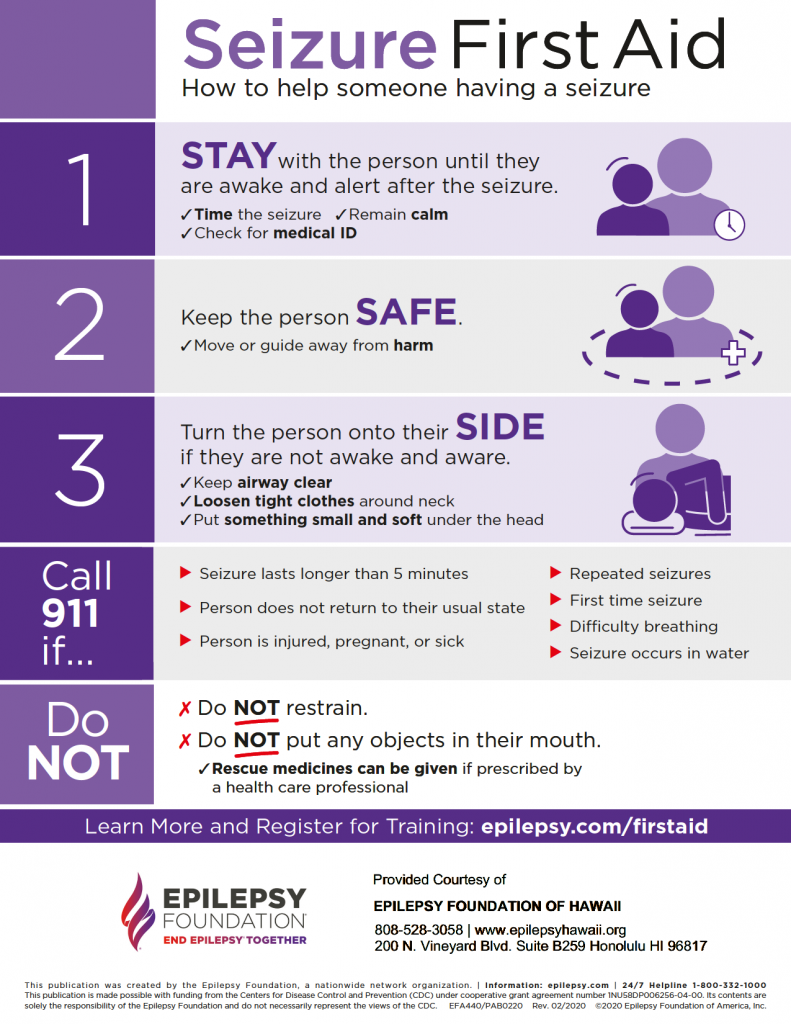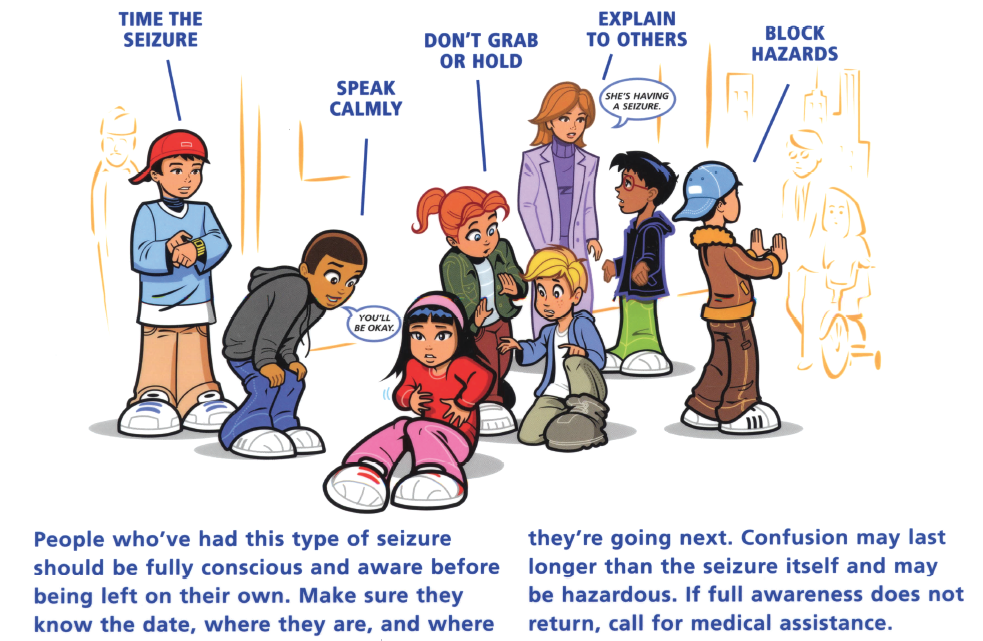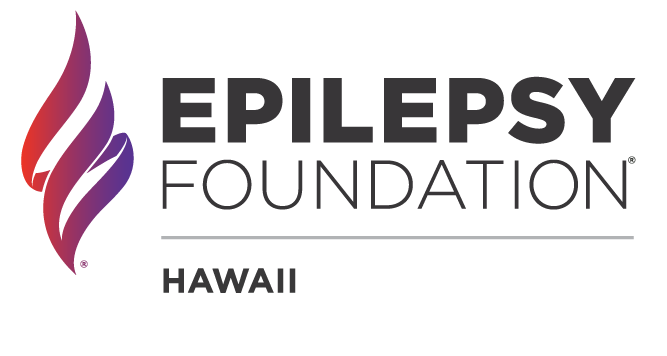Seizure First Aid
It is important for the public to know how to respond to all seizures. The first line of response when a person has a seizure is to provide general care and comfort and keep the person safe. For the majority of seizures, basic seizure first aid is all that may be needed.
When providing first aid, these are the key things to remember for each type of seizure.

Print and Download
Seizure First Aid Poster – English
Seizure First Aid Poster – Hawaiian
Seizure First Aid Poster – Samoan
Seizure First Aid Poster – Ilocano
Seizure First Aid Poster – Tagalog
Seizure First Aid Poster – Chuukese
Seizure First Aid Poster – Marshallese
Seizure First Aid Poster – Simplified Chinese
Seizure First Aid Poster – Korean
Seizure First Aid Poster – Vietnamese
Seizure First Aid Poster – Cherokee
Seizure First Aid Poster – Lakota
Seizure First Aid Poster – Navajo
Seizure First Aid Poster – Spanish
Seizure Procedures
Generalized Tonic-Clonic Seizures
- STAY with the person until the seizure ends.
- Keep the person SAFE and start timing the seizure.
- Turn the person on their SIDE if they start convulsing or are not awake.
- Keep calm and reassure other people who may be nearby.
- Don’t hold the person down or try to stop their movements.
- Time the seizure with your watch.
- Clear the area around the person of anything hard or sharp.
- Loosen ties or anything around the neck that may make breathing difficult.
- Put something flat and soft, like a folded jacket, under the head.
- Turn them gently onto one side. This will help keep the airway clear. Do not try to force the mouth open with any hard implement or with fingers. It is not true that a person having a seizure can swallow his tongue. Efforts to hold the tongue down can cause injury.
- Don’t attempt artificial respiration except in the unlikely event that a person does not start breathing again after the seizure has stopped.
- Stay with the person until the seizure ends naturally.
- Be friendly and reassuring as consciousness returns.
- Offer to call a taxi, friend or relative to help the person get home if he seems confused or unable to get home by themselves
Partial Seizures
- Speak quietly and in a reassuring manner. Some people may be able to hear during a seizure.
- Do not yell at the person, or restrain him or her unless absolutely necessary to keep the person safe. They may be confused and react differently to emotional or physical stimulation.
- Keep the person safe. For example: Keep them away from hot objects, surfaces or fire. Keep them away from dangerous situations, equipment or places. Keep them from wandering or running in dangerous places.
- Other behaviors during complex partial seizures may cause worry, but are usually not dangerous. These include screaming, kicking, ripping up papers, disrobing, sexual-like movements, and, rarely, masturbation. Stay next to the person when these occur and prevent injury.
- If someone is known to have unusual automatisms, he or she should be guided in a quiet and reassuring manner to a more private place if possible.
When to Call 911
- A seizure lasts 5 minutes or longer.
- One seizure occurs right after another without the person regaining consciousness or coming to between seizures.
- Seizures occur closer together than usual for that person.
- Breathing becomes difficult or the person appears to be choking.
- The seizure occurs in water.
- Injury may have occurred.
- The person asks for medical help.

